
The Majestic Serra de Tramuntana
Discover the Serra de Tramuntana: Mallorca's UNESCO World Heritage Site with stunning landscapes, charming villages, and rich cultural heritage.
The Serra de Tramuntana, nestled on the island of Mallorca, Spain, is a breathtaking mountain range that stretches along the northwest coast. Known for its dramatic landscapes, lush greenery, and picturesque villages, this UNESCO World Heritage Site offers a unique blend of natural beauty and cultural richness. Visitors can explore charming towns like Sóller and Valldemossa, each with its own distinct character and history. The Serra de Tramuntana is also a paradise for hikers and cyclists, with trails that wind through olive groves, past ancient stone terraces, and up to panoramic viewpoints. Don't miss the famous GR-221 route, also known as the Dry Stone Route, which showcases the area's stunning scenery. For those interested in history and architecture, the mountain range is dotted with monasteries, castles, and traditional Mallorcan houses. The region's unique flora and fauna, including endemic species, make it a haven for nature enthusiasts. Whether you're seeking adventure, relaxation, or a glimpse into Mallorca's past, the Serra de Tramuntana promises an unforgettable experience.
Local tips in Serra de Tramuntana
- Wear comfortable hiking shoes; many trails are rocky and steep.
- Visit early in the morning to avoid crowds and enjoy cooler temperatures.
- Bring a refillable water bottle; there are limited places to buy drinks along the trails.
- Consider renting a car for easier access to remote areas and villages.
- Check local weather forecasts; the mountains can experience sudden changes in weather.
- Try local delicacies like 'sobrassada' and 'ensaimada' in the village markets.
- Respect local wildlife and stay on marked paths to protect the environment.
The Majestic Serra de Tramuntana
The Serra de Tramuntana, nestled on the island of Mallorca, Spain, is a breathtaking mountain range that stretches along the northwest coast. Known for its dramatic landscapes, lush greenery, and picturesque villages, this UNESCO World Heritage Site offers a unique blend of natural beauty and cultural richness. Visitors can explore charming towns like Sóller and Valldemossa, each with its own distinct character and history. The Serra de Tramuntana is also a paradise for hikers and cyclists, with trails that wind through olive groves, past ancient stone terraces, and up to panoramic viewpoints. Don't miss the famous GR-221 route, also known as the Dry Stone Route, which showcases the area's stunning scenery. For those interested in history and architecture, the mountain range is dotted with monasteries, castles, and traditional Mallorcan houses. The region's unique flora and fauna, including endemic species, make it a haven for nature enthusiasts. Whether you're seeking adventure, relaxation, or a glimpse into Mallorca's past, the Serra de Tramuntana promises an unforgettable experience.
When is the best time to go to Serra de Tramuntana?
Iconic landmarks you can’t miss
Castell de Bellver
Discover the historic Castell de Bellver in Palma, a unique circular castle offering stunning views and rich cultural experiences in Mallorca.

Mirador de Es Colomer
Discover breathtaking views and serene landscapes at Mirador de Es Colomer, the ultimate observation deck in Mallorca's northern coastline.
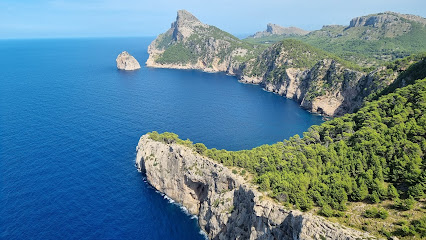
Torre del Verger
Experience the breathtaking views and rich history at Torre del Verger, a majestic watchtower in the heart of Mallorca's scenic landscape.

Coves de Gènova
Discover the stunning Coves de Génova, a historical landmark featuring breathtaking caves and rich Mediterranean culture just outside Palma.

Parc natural de Sa Dragonera
Explore the breathtaking landscapes and rich wildlife of Parc Natural de Sa Dragonera, a hidden gem in the Balearic Islands.

Jungle Parc
Experience the thrill of adventure at Jungle Parc, Santa Ponsa's premier amusement park with treetop obstacle courses and stunning natural scenery.

Finca de Galatzó
Experience the rich history and stunning landscapes of Finca de Galatzó, a must-visit historical landmark in the heart of the Balearic Islands.

Mirador de sa Foradada
Discover the stunning vistas of Mirador de sa Foradada, a scenic observation deck in Mallorca offering breathtaking views of the Mediterranean coastline.
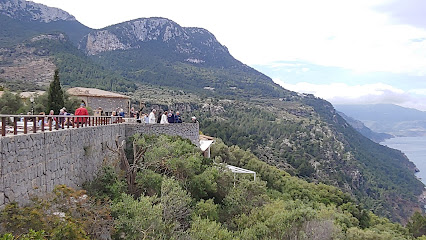
Cala Carbó
Experience the tranquil beauty of Cala Carbó, a nature preserve in the Balearic Islands, ideal for relaxation, adventure, and stunning natural landscapes.

Monestir de Miramar
Explore the serene beauty and rich history of Monestir de Miramar, a captivating museum nestled in the heart of Mallorca's stunning landscapes.

Castell d'Alaró
Experience the rich history and breathtaking views at Castell d'Alaró, a stunning medieval castle in the heart of the Balearic Islands.

La Casa de Robert Graves
Discover the legacy of Robert Graves at La Casa de Robert Graves in Deià, a picturesque journey through literature and Mediterranean beauty.

Puig de Galatzó
Experience the breathtaking beauty of Puig de Galatzó, a majestic mountain peak in the Balearic Islands, perfect for hiking and nature exploration.

Guies de Tramuntana
Discover the breathtaking adventure sports at Guies de Tramuntana in Sóller, Mallorca, where stunning landscapes await every explorer.

Ermita de Maristel·la
Explore the serene beauty of Ermita de Maristel·la, a historical church in the Balearic Islands, perfect for reflection and stunning views.
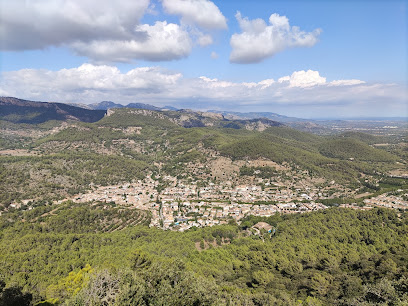
Unmissable attractions to see
Marineland Mallorca
Experience the magic of marine life at Marineland Mallorca, where thrilling shows and fascinating exhibits await you in a beautiful seaside setting.

Santuari de Lluc
Experience the spiritual serenity and natural beauty of Santuari de Lluc, a historic sanctuary nestled in the heart of Mallorca's stunning landscapes.

Mirador de Es Colomer
Experience the breathtaking views at Mirador de Es Colomer, Mallorca's stunning observation deck, where nature's beauty unfolds at every glance.
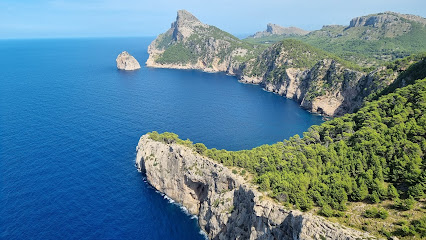
Banys Àrabs
Explore the serene Banys Àrabs in Palma, a historic site offering a glimpse into the Moorish past amidst tranquil gardens and ancient architecture.

Poble Espanyol de Mallorca
Explore the stunning Poble Espanyol de Mallorca, an open-air museum showcasing Spain's rich architectural heritage and vibrant culture.

Port de Valldemossa
Explore the tranquil beauty of Port de Valldemossa, a picturesque harbor in Mallorca offering stunning views, delectable local cuisine, and serene outdoor adventures.

Plaça de la Constitució
Explore the vibrant Plaça de sa Constitució in Sòller, an iconic historical plaza surrounded by stunning architecture and local culture.

Jardí Botànic de Sóller
Explore the serene beauty of the Jardí Botànic de Sóller, a botanical garden in the heart of Port de Sóller, showcasing Mediterranean flora and stunning views.

Ecovinyassa
Discover the eco-friendly oasis of Ecovinyassa in Soller, where lush gardens and organic delights await every nature-loving traveler.
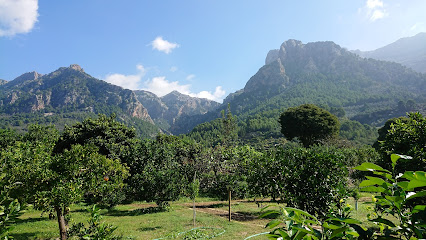
Jungle Parc
Experience adventure and nature at Jungle Parc, Santa Ponsa's premier amusement park with treetop courses and exciting activities for all ages.

Santuario de Monti-Sion
Explore the serene Santuario de Monti-Sion in Porreres, a captivating monastery rich in history and stunning natural beauty.
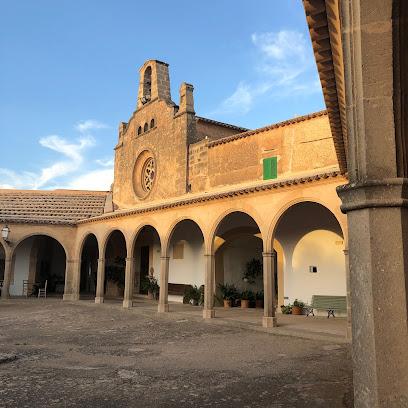
Finca de Galatzó
Discover the natural beauty and rich heritage of Finca de Galatzó, a must-visit attraction in the Balearic Islands, perfect for hiking and exploration.
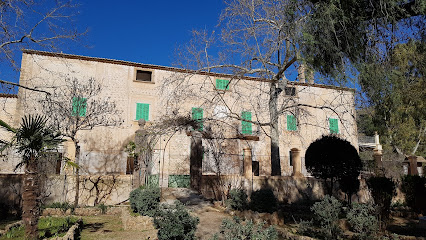
La Trapa
Discover the historical beauty of La Trapa, a former monastery offering breathtaking views and a serene escape in the Balearic Islands.

Reserva Park
Discover the breathtaking landscapes and thrilling adventures at Reserva Park, a premier tourist attraction in the Balearic Islands.

Son Verí
Discover the breathtaking beauty of Son Verí, a scenic paradise in Llucmajor, perfect for nature lovers and an unforgettable escape.
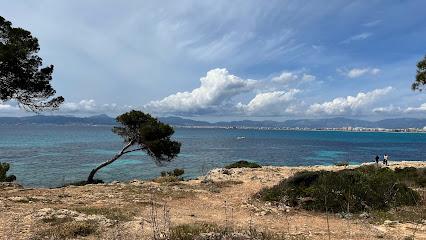
Essential places to dine
MAR Y MAR
Discover exquisite Mediterranean flavors at Mar y Mar in Peguera—where fresh seafood meets Spanish culinary tradition.

Restaurante Can Costa Valldemossa
Experience the heart of Majorcan gastronomy at Restaurante Can Costa Valldemossa with breathtaking views and authentic flavors.

QuitaPenas Valldemossa
Discover exquisite Spanish tapas at QuitaPenas Valldemossa - where local flavors meet gourmet dining in a charming setting.
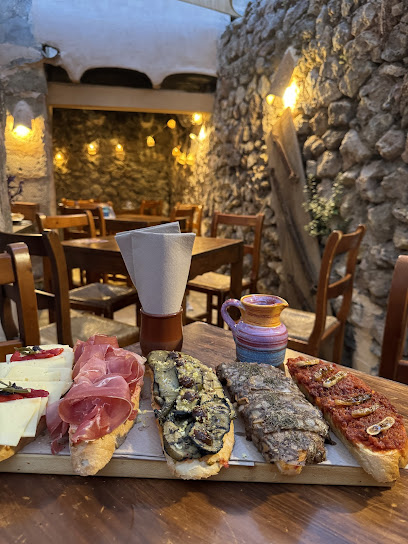
Ca's Patró March
Discover exquisite Mediterranean cuisine at Ca's Patró March in Deià, where breathtaking views meet unforgettable flavors.

Restaurant Es Port de Valldemossa
Experience authentic Mediterranean flavors at Restaurant Es Port de Valldemossa - where stunning views meet exquisite cuisine.
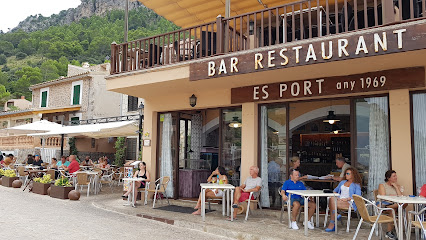
Sis Pins
Discover Sis Pins: A Mediterranean culinary haven in Son Serra de Marina with fresh flavors and stunning coastal views.

Sa Foradada
Experience exquisite Spanish cuisine with breathtaking views at Sa Foradada - a culinary haven in Mallorca's stunning Deià region.

Restaurante La Gritta
Experience exquisite Mediterranean cuisine at Restaurante La Gritta in Cala Fornells – where every meal is a celebration of flavor and view.

Hostal Can Marió
Discover authentic Majorcan cuisine at Hostal Can Marió in Valldemossa - where tradition meets Mediterranean flair amidst stunning landscapes.
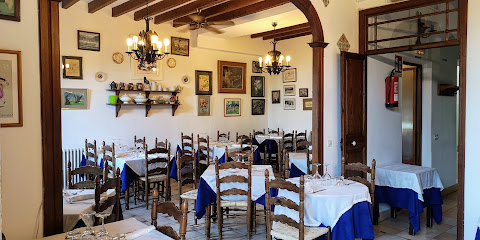
Vent de Tramuntana
Experience exquisite Mediterranean cuisine at Vent de Tramuntana in Port d'Andratx - where every dish tells a story.

SA VINYA
Discover the authentic taste of the Mediterranean at Sa Vinya in Es Capdellà – where every meal is crafted with passion and fresh local ingredients.

Ca'n Llimona
Discover Ca'n Llimona in Sóller - where authentic Italian meets Mediterranean charm in every delicious bite.
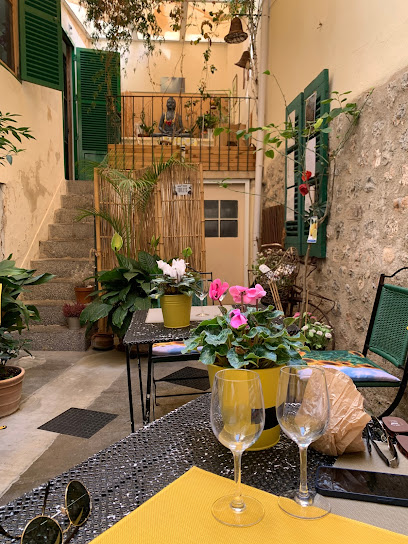
Es Verger
Discover the essence of traditional barbecue at Es Verger in Alaró - where every dish tells a story of flavor and tradition.

Restaurant Molí des Capdellà
Discover the heart of Majorcan cuisine at Restaurant Molí des Capdellà - where authentic flavors meet warm hospitality.

La Campana
Experience authentic Mediterranean dining at La Campana in Peguera with delightful tapas, fresh pasta, and exquisite wines in a charming atmosphere.

Markets, malls and hidden boutiques
FAN Mallorca Shopping
Explore FAN Mallorca Shopping, where retail therapy meets delightful dining in the heart of Palma, Mallorca.

Mallorca Fashion Outlet
Explore unbeatable deals at Mallorca Fashion Outlet, the premier destination for shopping, dining, and entertainment in the Balearic Islands.

The Square Santa Ponça
Experience shopping, dining, and entertainment at The Square Santa Ponça, a vibrant hub in the heart of the Balearic Islands.

Centre Cultural Comercial s’Escorxador
Explore the Centre Cultural Comercial s’Escorxador, Palma's vibrant shopping mall blending culture, shopping, and dining in the heart of the Balearic Islands.

BAZAR NOVA
Explore the vibrant Bazar Nova in Palmanova for unique gifts, home goods, and fun souvenirs to remember your Balearic adventure.

Centro Hogar
Explore Centro Hogar in Santa Ponsa for unique gifts, home essentials, and affordable finds, capturing the essence of the Balearic Islands.

Knox Design Homestore
Explore Knox Design Homestore in Calvià for exquisite furniture and decor that elevate your living spaces with style and elegance.

Poundstretcher
Explore Poundstretcher in Santa Ponsa for unique gifts, local crafts, and affordable treasures that capture the spirit of the Balearic Islands.

Sa Botiga d'en Lluís (Supermercat)
Discover the charm of Sa Botiga d'en Lluís, a family-owned supermarket in Es Capdellà offering local delicacies and a welcoming atmosphere for tourists.

Boutique Europa
Discover unique fashion and sportswear at Boutique Europa in Peguera, the perfect destination for style-savvy travelers.

Dream Boutique
Explore Dream Boutique in Peguera for exquisite clothing and accessories that reflect the vibrant Mallorca lifestyle.
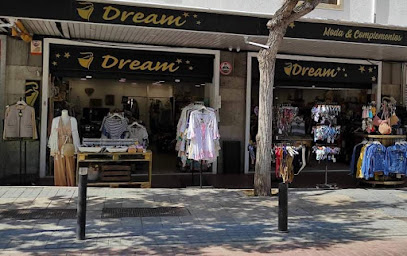
SJÄLS KÄRLEK
Explore SJÄLS KÄRLEK for exquisite jewelry that captures the essence of Balearic elegance, perfect for unique gifts and personal treasures.

Valldemossa Secrets
Explore Valldemossa Secrets for unique Mallorca crafts and souvenirs, nestled in the stunning village of Valldemossa, a cultural treasure in the Balearic Islands.

Pola Unique Jewelry
Explore exquisite handcrafted jewelry at Pola Unique Jewelry, where artistry meets elegance in every piece.

Living Mallorca
Discover exquisite furniture and home decor at Living Mallorca, where style meets quality in the heart of the Balearic Islands.

Essential bars & hidden hideouts
Restaurante Beach Bar Empatheia
Experience the best of Mediterranean flavors at Restaurante Beach Bar Empatheia, where every meal is a celebration of exquisite taste and stunning views.

Restaurant es Grau
Savor authentic Mediterranean flavors at Restaurant es Grau, a delightful dining experience in the heart of the Balearic Islands.

Waikiki
Discover the vibrant spirit of Waikiki, where stunning beaches meet rich culture and endless adventures await.

Red Rubber Duck
Experience the vibrant taste of Spanish tapas and cocktails at Red Rubber Duck in Peguera, a must-visit culinary destination in the Balearic Islands.

Bar Restaurant Es Pont
Discover Bar Restaurant Es Pont in Puigpunyent, where authentic grill flavors meet a cozy atmosphere in the heart of the Balearic Islands.

Bar sa Tanca
Discover the Mediterranean flavors at Bar sa Tanca, a charming restaurant in Estellencs offering fresh seafood and Italian delicacies.

The Prince William Pub
Experience the vibrant atmosphere of The Prince William Pub in Palma Nova, a lively pub offering great food, live music, and a friendly ambiance.

Cafè del Boulevard
Discover the charm of Cafè del Boulevard in Paguera, a perfect spot for cocktails, tapas, and Mediterranean ambiance.

El Bar
Experience the vibrant nightlife at El Bar in Peguera, where delicious drinks and a friendly atmosphere await every visitor.

Mio Bar
Discover the vibrant atmosphere of Mio Bar in Peguera, where delicious drinks and delightful bites meet the charm of the Balearic Islands.

Kon Tiki Beach Bar
Experience the vibrant atmosphere and stunning views at Kon Tiki Beach Bar in Peguera, where relaxation meets Mediterranean charm.

@MMIceRollsMallorca By Juliette und Holger
Experience the vibrant atmosphere and delicious ice rolls at @MMIceRollsMallorca, the ultimate cocktail and sports bar in Peguera, Balearic Islands.

Bar La Blanca Paloma
Discover the lively spirit of Peguera at Bar La Blanca Paloma, a must-visit bar for locals and tourists seeking great drinks and a vibrant atmosphere.

Bar salvatores
Discover Bar Salvatores in Peguera, where great drinks meet a welcoming atmosphere in the heart of the Balearic Islands.

Bar Son Mas
Experience the vibrant ambiance and delightful flavors at Bar Son Mas, Andratx's favorite café and bar in the Balearic Islands.

Local Phrases about Serra de Tramuntana
-
- HelloHola
[oh-lah] - GoodbyeAdiós
[ah-dee-ohs] - YesSí
[see] - NoNo
[noh] - Please/You're welcomePor favor/De nada
[por fah-vor/deh nah-dah] - Thank youGracias
[grah-thyahs] - Excuse me/SorryPerdón/Lo siento
[pehr-dohn/loh see-ehn-toh] - How are you?¿Cómo estás?
[koh-moh ehs-tahs] - Fine. And you?Bien. ¿Y tú?
[byehn. ee too] - Do you speak English?¿Hablas inglés?
[ah-blahs een-glehs] - I don't understandNo entiendo
[noh ehn-tee-ehn-doh]
- HelloHola
-
- I'd like to see the menu, pleaseMe gustaría ver el menú, por favor
[meh goo-stah-ree-ah behr ehl meh-noo pohr fah-vor] - I don't eat meatNo como carne
[noh koh-moh kahr-neh] - Cheers!¡Salud!
[sah-loohd] - I would like to pay, pleaseMe gustaría pagar, por favor
[meh goo-stah-ree-ah pah-gahr pohr fah-vor]
- I'd like to see the menu, pleaseMe gustaría ver el menú, por favor
-
- Help!¡Ayuda!
[ah-yoo-dah] - Go away!¡Vete!
[veh-teh] - Call the Police!¡Llama a la policía!
[yah-mah ah lah poh-lee-see-ah] - Call a doctor!¡Llama a un médico!
[yah-mah ah oon meh-dee-koh] - I'm lostEstoy perdido
[ehs-toy pehr-dee-doh] - I'm illEstoy enfermo
[ehs-toy ehn-fehr-moh]
- Help!¡Ayuda!
-
- I'd like to buy...Me gustaría comprar...
[meh goo-stah-ree-ah kohm-prahr] - I'm just lookingSolo estoy mirando
[soh-loh ehs-toy mee-rahn-doh] - How much is it?¿Cuánto cuesta?
[kwan-toh kwehs-tah] - That's too expensiveEs demasiado caro
[ehs de-mah-syah-doh kahr-oh] - Can you lower the price?¿Puedes rebajar el precio?
[pweh-dehs reh-bah-hahr ehl preh-see-oh]
- I'd like to buy...Me gustaría comprar...
-
- What time is it?¿Qué hora es?
[keh oh-rah ehs] - It's one o'clockEs la una
[ehs lah oo-nah] - Half past (10)Las diez y media
[lahs dyehs ee meh-dee-ah] - MorningMañana
[mah-nyah-nah] - AfternoonTarde
[tahr-deh] - EveningNoche
[noh-cheh] - YesterdayAyer
[ah-yehr] - TodayHoy
[oy] - TomorrowMañana
[mah-nyah-nah] - 1Uno
[oo-noh] - 2Dos
[dohs] - 3Tres
[trehs] - 4Cuatro
[kwah-troh] - 5Cinco
[theen-koh] - 6Seis
[says] - 7Siete
[syeh-teh] - 8Ocho
[oh-choh] - 9Nueve
[nweh-veh] - 10Diez
[dyehs]
- What time is it?¿Qué hora es?
-
- Where's a/the...?¿Dónde está...?
[dohn-deh ehs-tah] - What's the address?¿Cuál es la dirección?
[kwahl ehs lah dee-rehk-syohn] - Can you show me (on the map)?¿Puedes mostrarme (en el mapa)?
[pweh-dehs mohs-trahr-meh (ehn ehl mah-pah)] - When's the next (bus)?¿Cuándo es el próximo (autobús)?
[kwan-doh ehs ehl proh-ksy-moh (ow-toh-boos)] - A ticket (to ....)Un billete (a ...)
[oon bee-yeh-teh (ah ...)]
- Where's a/the...?¿Dónde está...?
History of Serra de Tramuntana
-
The Lluc Monastery, founded in the 13th century, is one of the most significant spiritual sites in Mallorca. According to legend, a shepherd boy discovered a statue of the Virgin Mary in a grotto, which led to the establishment of the monastery. Over the centuries, it has become a pilgrimage site and a symbol of Mallorcan faith and culture.
-
During the Moorish occupation of Mallorca from the 10th to the 13th centuries, the Arabs introduced advanced agricultural techniques that transformed the Serra de Tramuntana. They built intricate irrigation systems, known as 'qanats,' and terraced the mountainsides to enhance farming. These innovations are still visible in the region's landscape today.
-
In 1229, King James I of Aragon launched a campaign to conquer Mallorca, including the Serra de Tramuntana. The conquest marked the end of Muslim rule and the beginning of Catalan influence in the region. The Christian reconquest is commemorated in various local festivals and historical sites.
-
In the late 19th century, Archduke Ludwig Salvator of Austria fell in love with the Serra de Tramuntana and dedicated his life to documenting its natural beauty and culture. His extensive writings and preservation efforts helped raise awareness about the region, and many places in the Tramuntana still bear his influence.
-
In 2011, the Serra de Tramuntana was designated a UNESCO World Heritage Site in recognition of its cultural and natural significance. This accolade highlights the unique blend of landscape, history, and human interaction that has shaped the region over millennia.
Serra de Tramuntana Essentials
-
Serra de Tramuntana is located on the island of Mallorca, Spain. The nearest international airport is Palma de Mallorca Airport (PMI), which is approximately 30 kilometers away. From the airport, you can rent a car, take a taxi, or use public transport to reach the region. Buses and trains connect Palma with several towns in Serra de Tramuntana, making it accessible for travelers.
-
While exploring Serra de Tramuntana, renting a car is one of the best options to fully appreciate the scenic routes and reach remote areas. Alternatively, public buses operate between major towns and villages, providing a cost-effective way to travel. There are also guided tours available that offer transportation and insightful information about the region. For more adventurous travelers, cycling is a popular way to explore the area, offering a mix of challenging and leisurely routes.
-
The official currency in Spain is the Euro (EUR). Credit and debit cards are widely accepted in most establishments, including hotels, restaurants, and shops. However, it is advisable to carry some cash for smaller purchases, especially in more remote areas and local markets. ATMs are available in larger towns, but it is a good idea to withdraw sufficient cash before heading into the mountains.
-
Serra de Tramuntana is generally a safe destination for tourists. Nonetheless, it is important to take standard precautions. Avoid leaving valuables unattended and be cautious in crowded areas to prevent pickpocketing. There are no specific high-crime areas targeting tourists, but always stay vigilant and aware of your surroundings, especially when hiking in remote areas.
-
In case of emergency, dial 112 for immediate assistance, which connects you to police, fire, and medical services. It is recommended to have travel insurance that covers medical emergencies. For minor health issues, there are pharmacies in the towns where you can purchase over-the-counter medications. Be sure to carry a basic first aid kit if you plan on hiking or engaging in outdoor activities.
-
Fashion: Do dress comfortably and in layers, as weather can change quickly in the mountains. Avoid overly revealing clothing when visiting religious sites. Religion: Do respect local customs and traditions. Always behave respectfully in churches and monasteries. Public Transport: Do be punctual and respectful to fellow passengers. Don't eat or drink on public transport. Greetings: Do greet people with a friendly 'Hola' or 'Bon Dia' (Good Day in Catalan). A handshake is also common. Eating & Drinking: Do try local specialties and accept food offerings graciously. Don't rush meals; dining is a leisurely activity in Spain.
-
To experience Serra de Tramuntana like a local, visit the weekly markets in towns such as Sóller and Pollença where you can buy fresh produce and artisanal goods. Engaging with locals can provide insights into the region's history and culture. Don't miss trying 'pa amb oli', a traditional Mallorcan dish, and 'ensaimadas', a local pastry. Hiking enthusiasts should explore the GR 221 trail for stunning views and a sense of adventure. Also, consider visiting during local festivals such as Festa de la Verge de la Victoria in Pollença for an authentic cultural experience.
Trending Landmarks in Serra de Tramuntana
Nearby Cities to Serra de Tramuntana
-
Things To Do in Tarragona
-
Things To Do in Barcelona
-
Things To Do in Valencia
-
Things To Do in Girona
-
Things To Do in Lleida
-
Things To Do in Alicante
-
Things To Do in Algiers
-
Things To Do in Teruel
-
Things To Do in Andorra la Vella
-
Things To Do in Pas de la Casa
-
Things To Do in Escaldes-Engordany
-
Things To Do in Encamp
-
Things To Do in La Massana
-
Things To Do in Canillo
-
Things To Do in Soldeu













